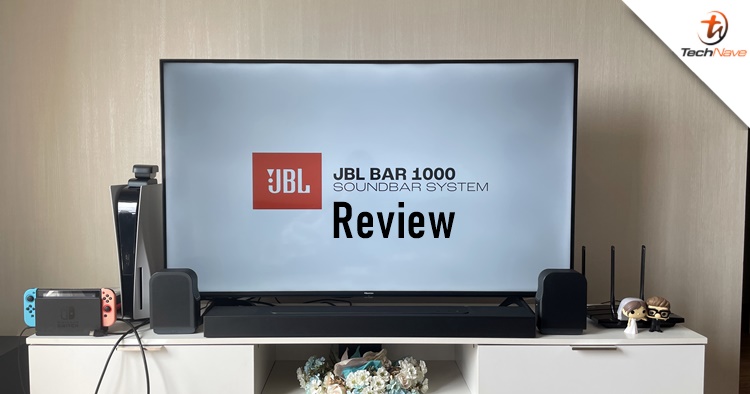
Choosing a soundbar for your living room and TV can be quite a daunting task. What model should I go for? Which type should I get? What is my budget? Do I really need detachable speakers? There are a lot of things to consider before making your decision.
Did I mention detachable speakers? Yes, that's the case with the new JBL Bar 1000. It looks nice, it's big, and it cost RM4999. It sounds like a hefty investment, so if you're wondering if it's worth it, read below to find out what I like (and didn't like) about the JBL Bar 1000 in this review.
If you bought yourself a JBL Bar 1000, it's going to take a while for you to set up everything. The box is huge, with the main soundbar, sub-woofer, necessary tools, manual book, accessories and detachable speakers all packed inside. You can mount the speakers onto a wall if you like, as it shouldn't be too hard if you know what you're doing.
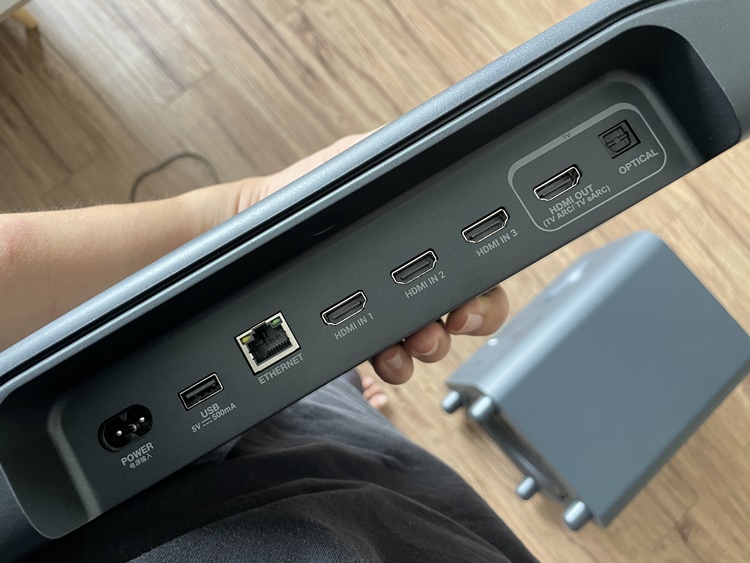
The available ports that you can use
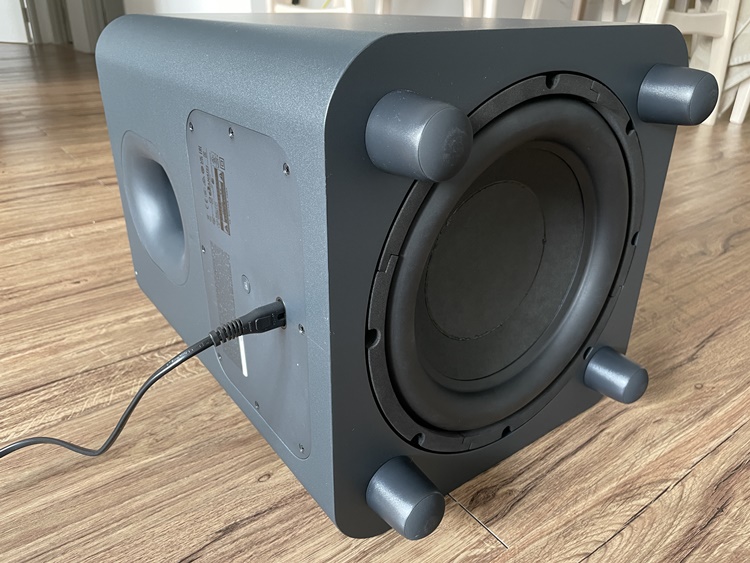
An intriguing choice for the subwoofer speaker to be placed below
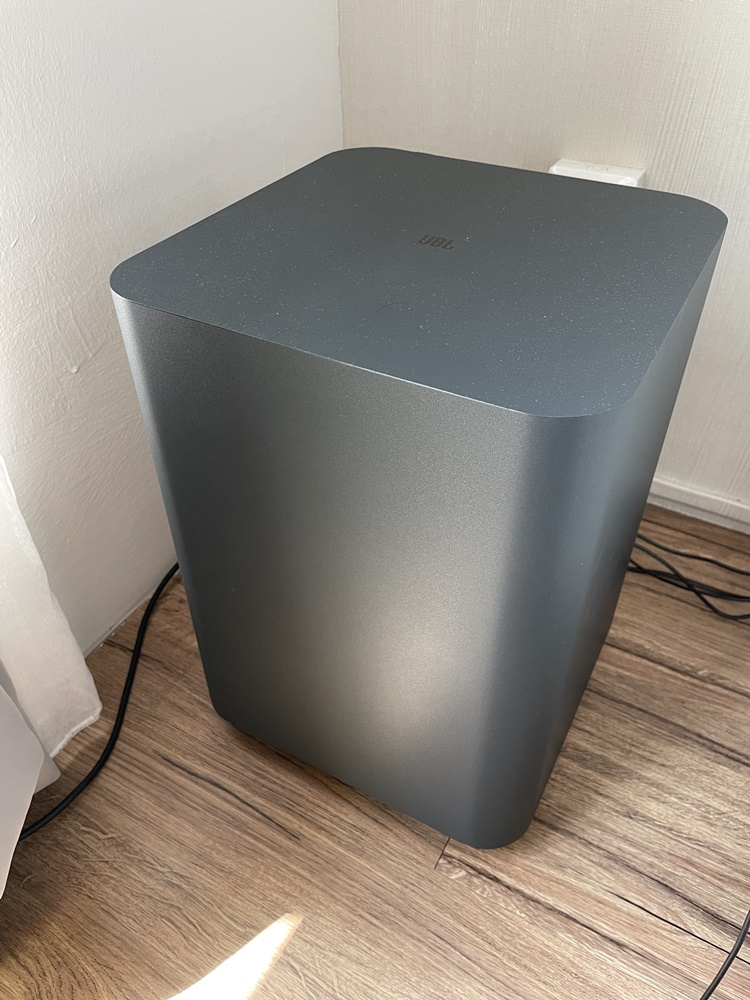
This is a huge subwoofer
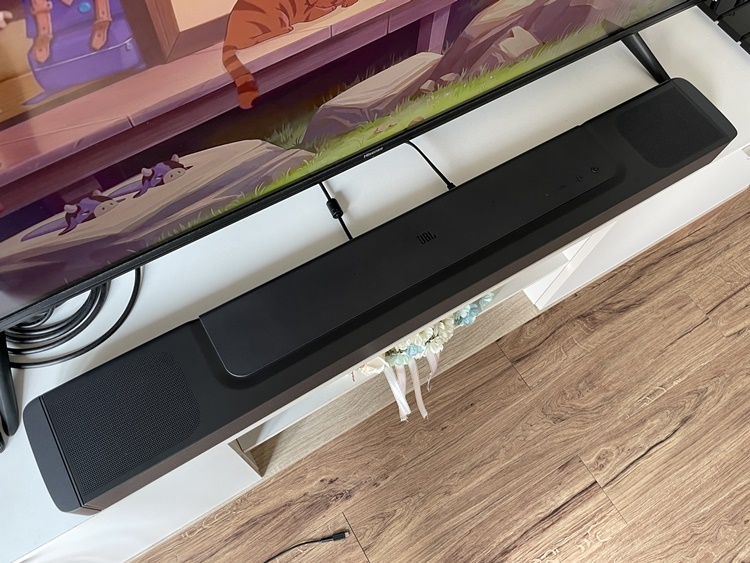
The soundbar, sans the detachable rear speakers
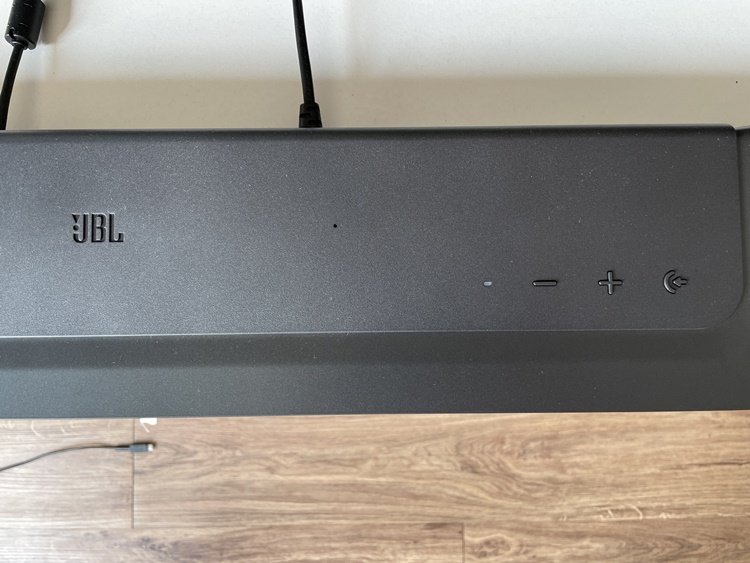
The control panel
Aside from manually installing the soundbar, you will need the JBL One app on your mobile device. Like setting up the soundbar and sub-woofer, pairing it with the JBL One app is a piece of cake. However, you will have to perform some sound tests (called calibration in the app) before using it. This is so the soundbar can optimise the sound profile to best suit your living space and environment.
Doing this takes a few minutes, so you need to be patient while it calibrates. For the best sound optimisation, you have to stay extremely quiet. Moreover, you have to place the detachable rear speakers in the best spots you want for the calibration process. Honestly, it's quite a hassle, but you'll be all set once it's done.
Before we get to the sound performance, let's talk a bit about the JBL One app. It's where you set the equaliser, redo the calibration sound test, control the detachable rear speakers' volume, and more. The app supports some Music Services. But unfortunately, the ones supported aren't very popular with the Malaysian crowd. If anything, TIDAL would be used more, but only by a small percentage of audiophiles. Overall, the selection of available Music Services is very American-based.
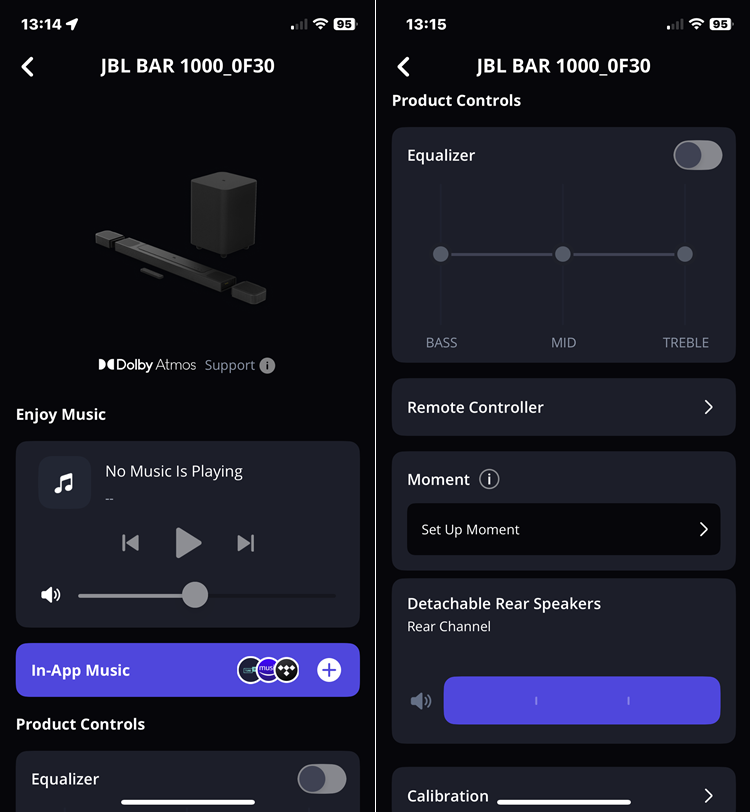
The JBL One app
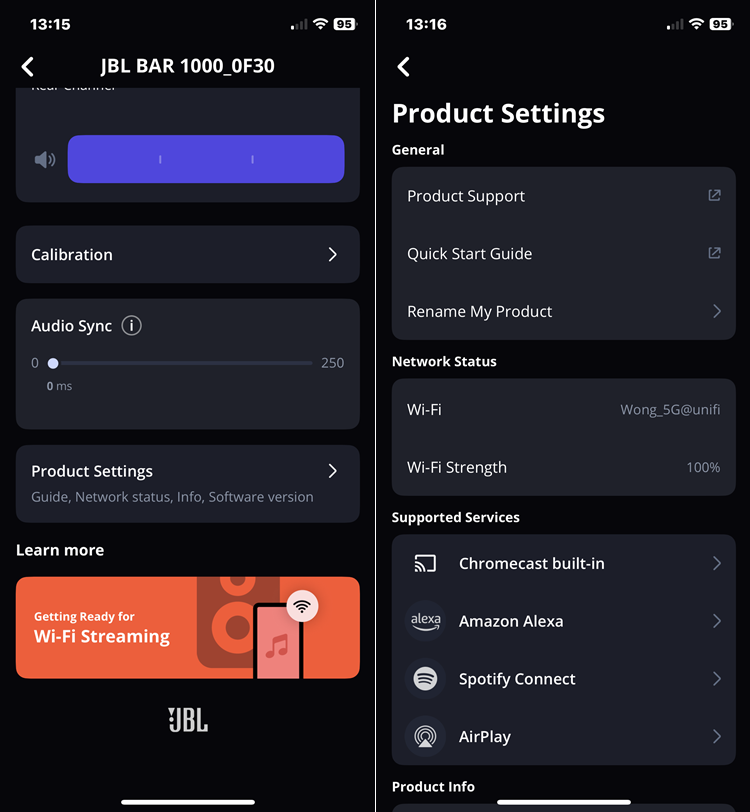
Left: Calibrate the soundbar immediately after pairing; Right: More options here
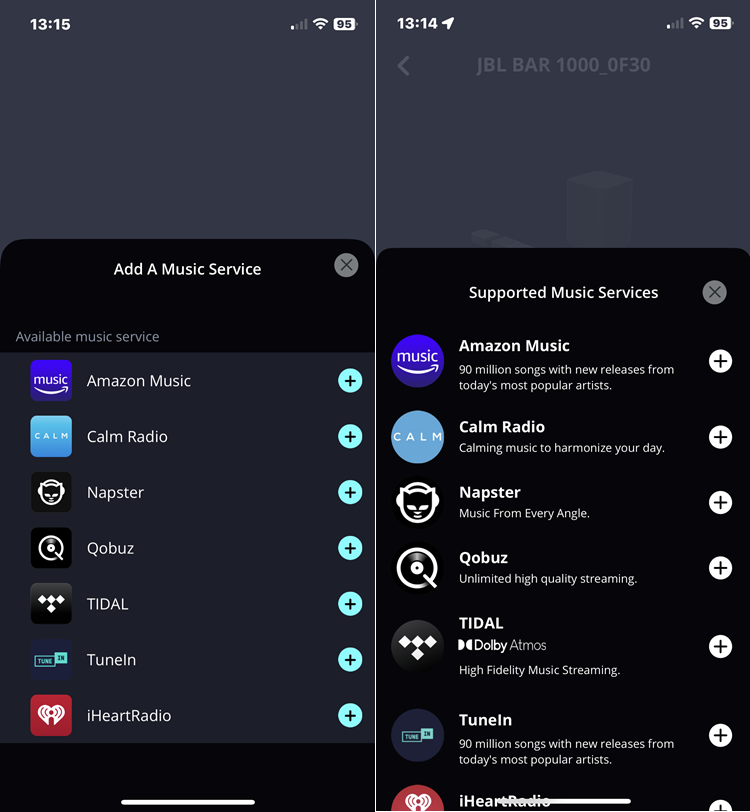
Most of the music services aren't popular in Malaysia
Although you can use Spotify Connect and AirPlay, you have to manually set it up via the Product Settings page. Other than that, there aren't many things to do on the app aside from re-calibrating your speakers again if you want. The Equaliser offers the bare minimum of customisation, and the 'Moment' feature can only be utilised with the Music Services mentioned earlier.
Now that we have gotten the app out of the way, it's time to talk about the JBL Bar 1000 performance. The soundbar features a 7.1.4-channel with Dolby Atmos and DTS:X technologies, which is totally good stuff for audiophiles. Suffice it to say the sound quality is what you would expect. This is great, but what about the detachable rear speakers?
I think it's safe to say that most customers would be sceptical of the detachable rear speakers. How much difference can they make? Well, you may not hear that much if you're not paying attention. But they do produce additional sound, and you can actually feel the subtle 3D surround sound effect. From my experience, they're not as loud as I would like them to be. But if I put the rear speakers elsewhere when watching a movie or playing games, I would feel that something is missing.
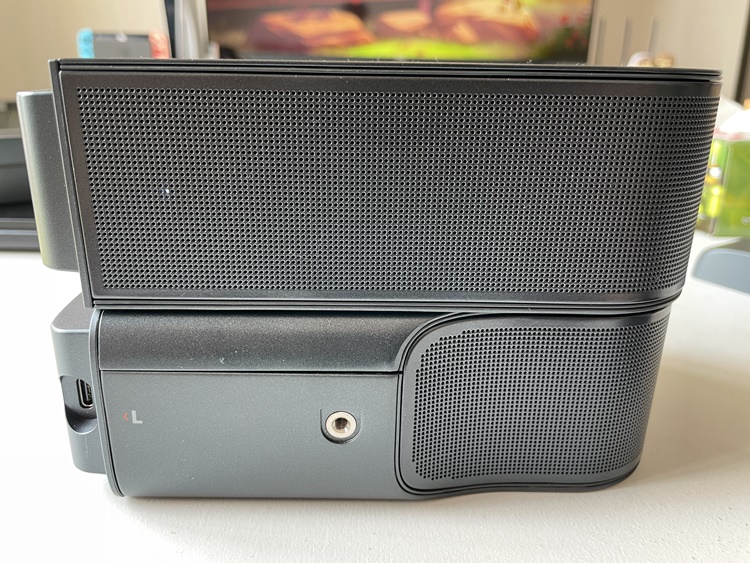
The detachable rear speakers
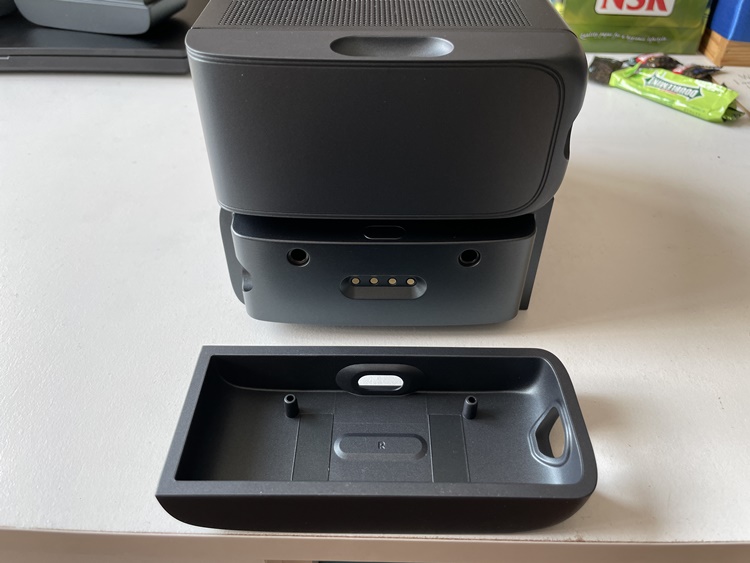
JBL provides covers for the rear speakers
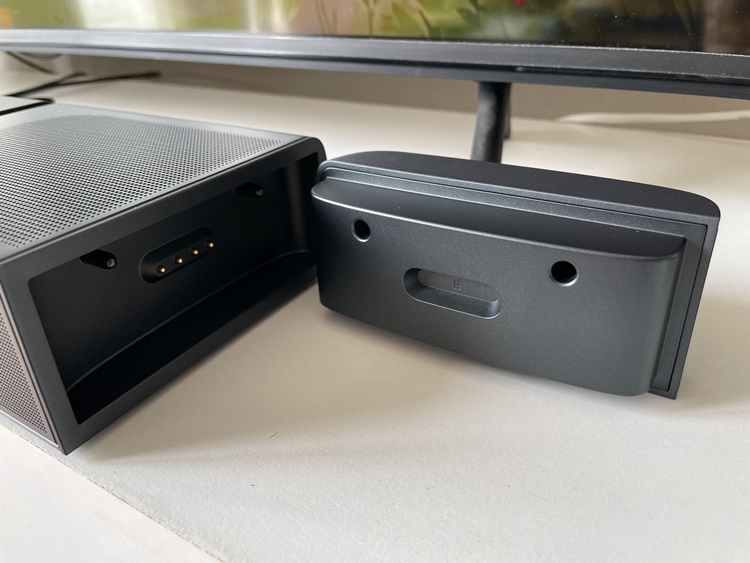
All the covers are magnetic
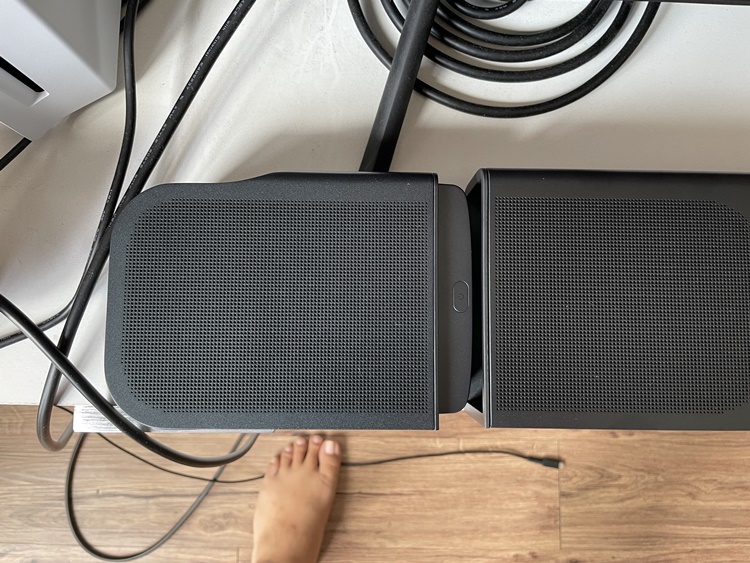
The rear speakers can be charged at the soundbar (approx. 3 hours for full charge)
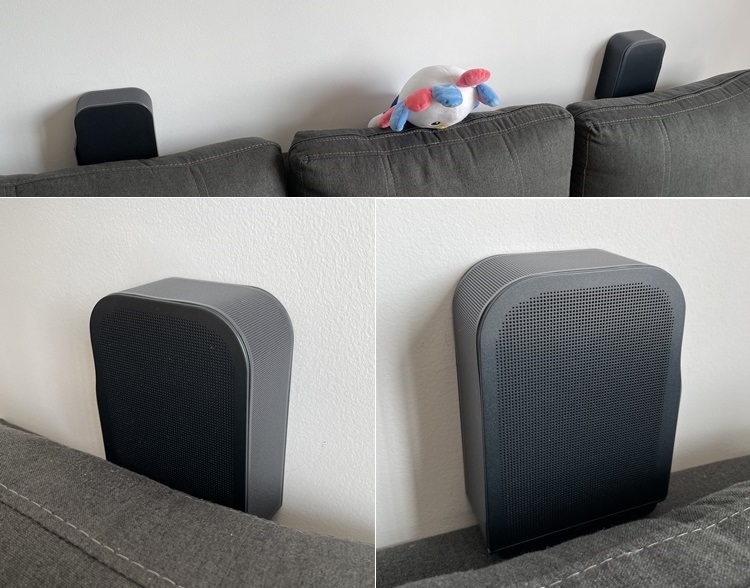
This was where I placed the rear speakers, lol
If you're the type who loves listening to your favourite songs in your living room, I think you would enjoy the JBL Bar 1000. There were a couple of times I would rest on my couch listening to acoustic pieces feeling relaxed as if a live band was playing live in front of me. Speaking of live, the soundbar should also elevate your listening experience when watching a football match or a live event/concert.
Not all is perfect, though. Sometimes, the bass overlaps the vocals or dialogues, especially in movies or TV series. Just imagine watching an action movie with epic background music. It sounds really good, but sometimes I have a hard time hearing what the characters are saying. The good thing is that this doesn't happen very often, thanks to the PureVoice technology by Harman. You can also lower the bass volume in the app to avoid this minor issue, although I couldn't really find a good balance (or it's probably just me).
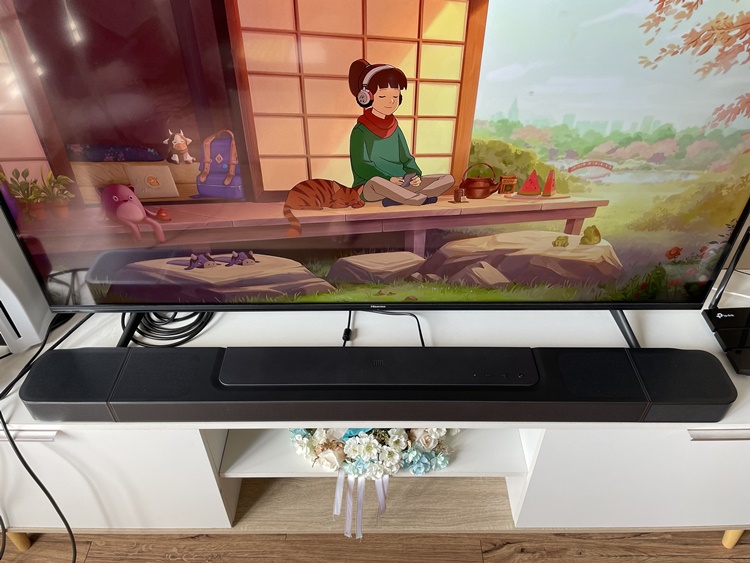
Music sound performance - nice
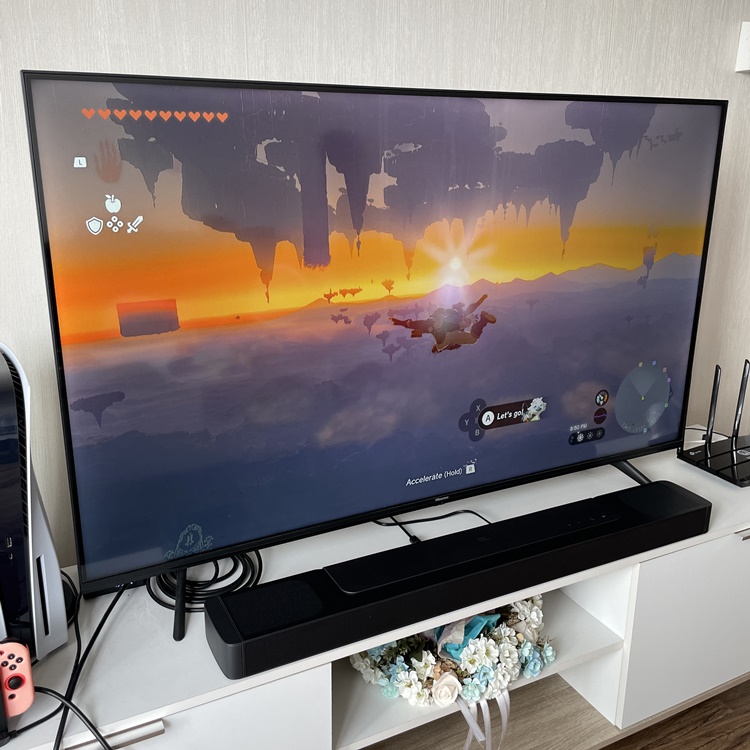
Gaming with 3D surround sound effects - nice +1
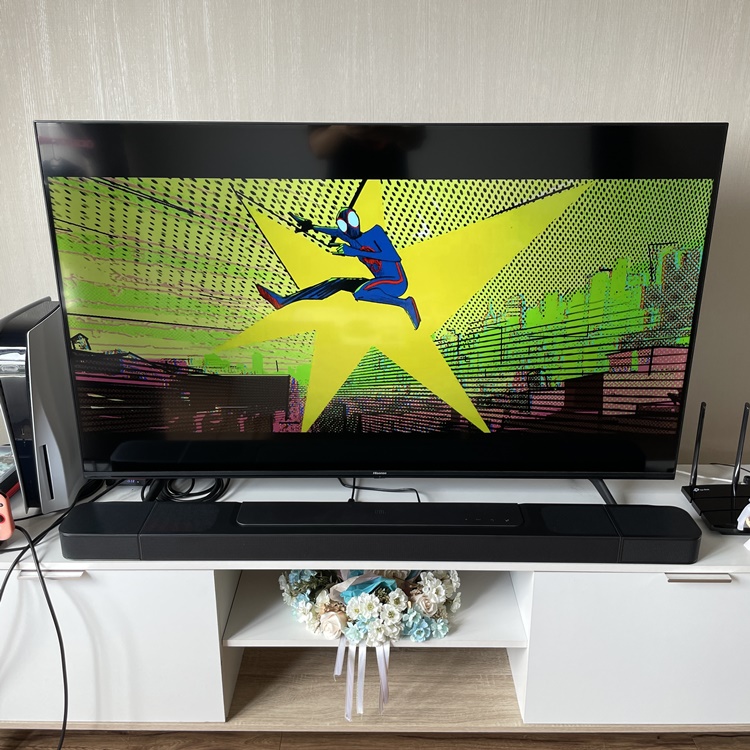
Watching movies with the rear speakers paired with the soundbar - nice +3
Personally, I feel the JBL Bar 1000 is a good option for customers or new audiophiles who are just starting to explore or build their sound theatre setup for their living rooms. For the price, you get top-class True Dolby Atmos sound across all kinds of entertainment with 3D surround sound effects. If there's only one thing I didn't like, it's how frequently I have to recharge the rear speakers. I eventually got to the point where I got lazy and just stopped detaching them.
JBL Bar 1000 specifications:
- 7.1.4-channel soundbar with detachable surround speakers, MultiBeam, Dolby Atmos, and DTS:X
- Power distribution (Max. @THD 1%) - Total 880W (Soundbar: 340W, Subwoofer: 300W, Surrounds: 2 x 70W)
- Soundbar transducer - 5x (46x90mm) racetrack drivers, 3x 0.75-inch (20mm) tweeters,
- 2x 2.75-inch (70mm) up-firing full-range drivers
- Surround speaker transducer - 0.75-inch (20mm) tweeter, 2.75-inch (70mm) up-firing full-range driver
- Subwoofer transducer - 10-inch (260mm)
- HDMI version 2.1, HDCP v2.3
- HDR pass-through - HDR10, Dolby Vision
- Bluetooth V5, A2DP V1.2, AVRCP V1.5
- Supports WiFi Dual Band 2.4/5GHz, Bluetooth V5, A2DP V1.2, AVRCP V1.5
- Streaming service - Chromecast Built-In, Airplay, Alexa MRM, QPlay (China only)
- Ports - HDMI-eARC x1, HDMI-in x3, Optical x1
Pros - A great high-end soundbar speaker with Dolby Atmos, good-enough 3D surround sound effects, and easy to set up
Cons - Frequent charging on the rear speakers can be quite a hassle
Conclusion - Most people will enjoy the JBL Bar 1000's sound quality in music, movies, and games





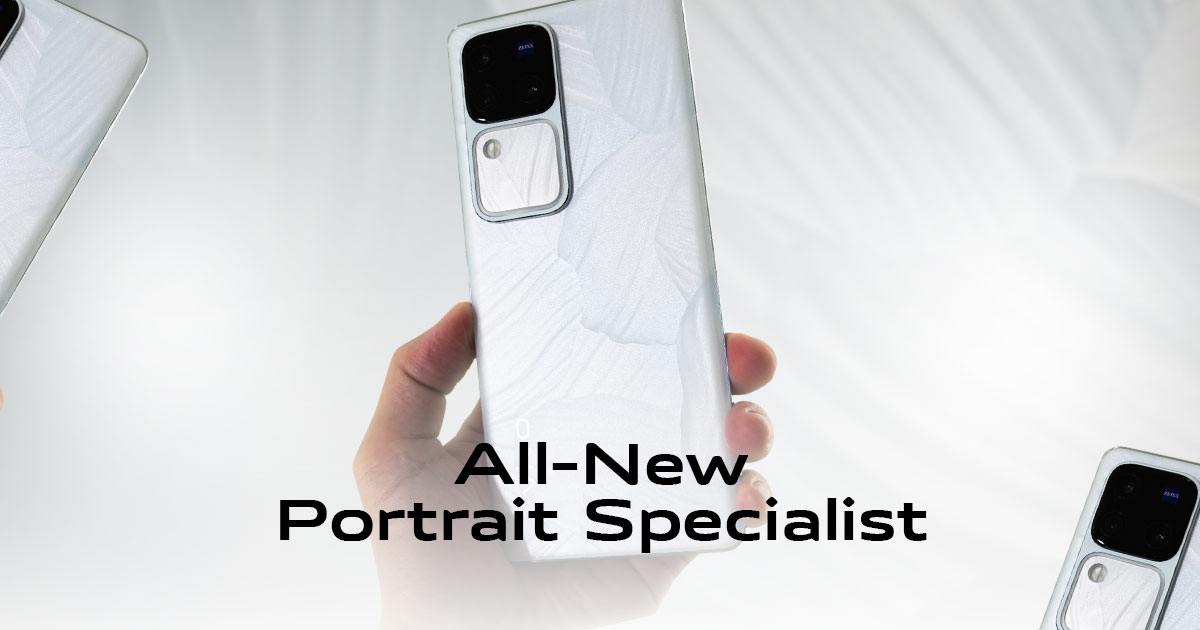
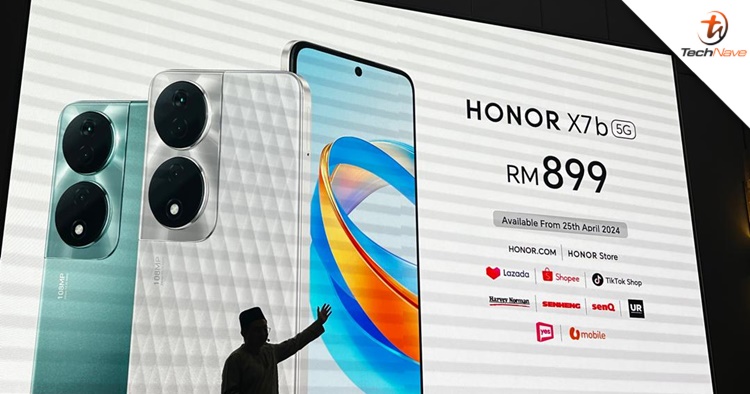
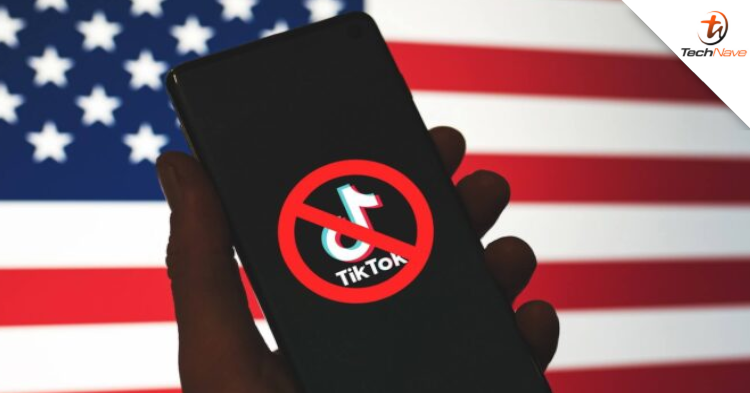

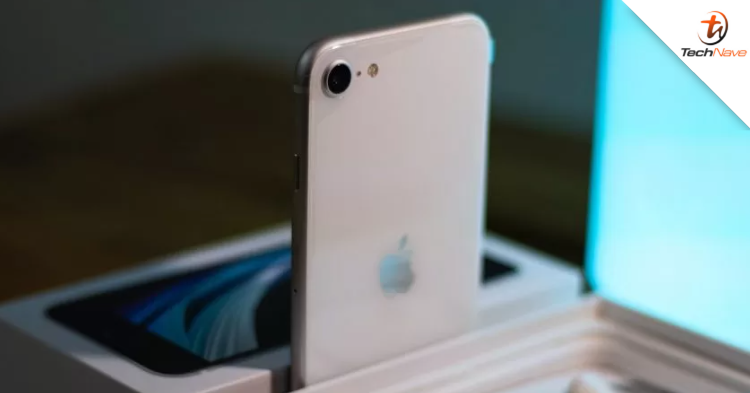



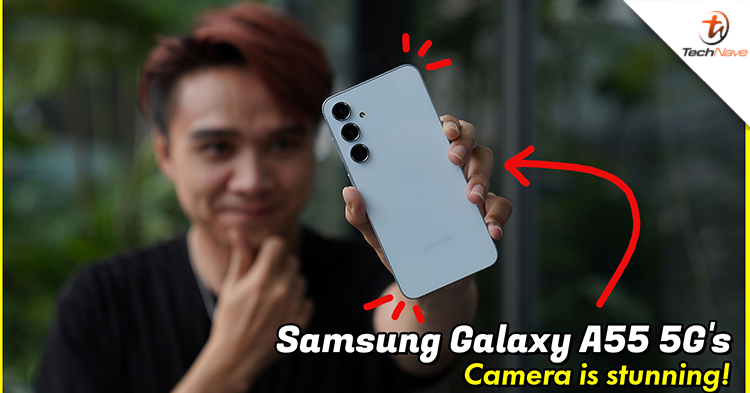

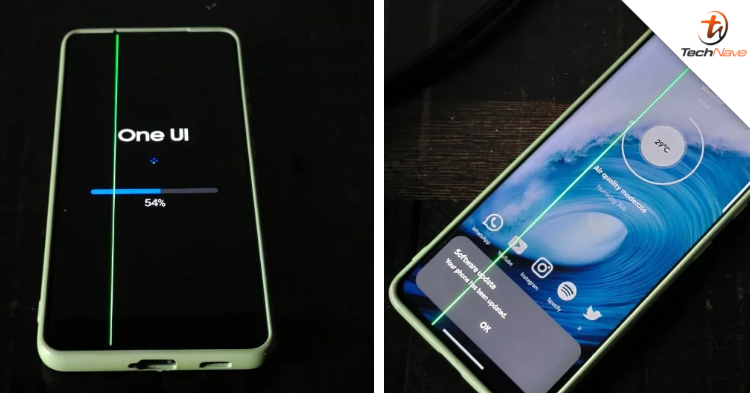

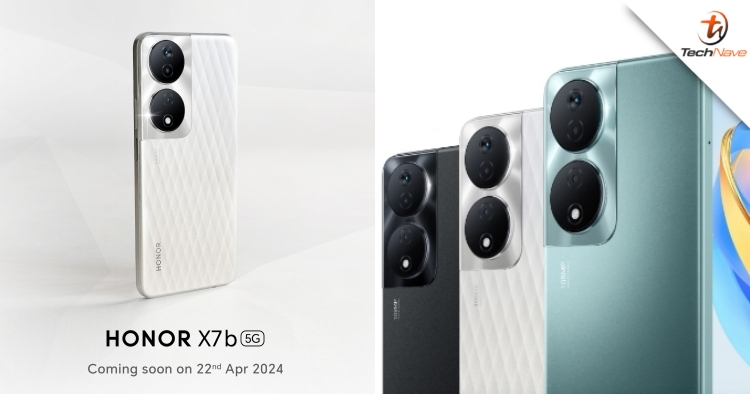
COMMENTS